Charisma Audio MC-2 Phono Cartridge
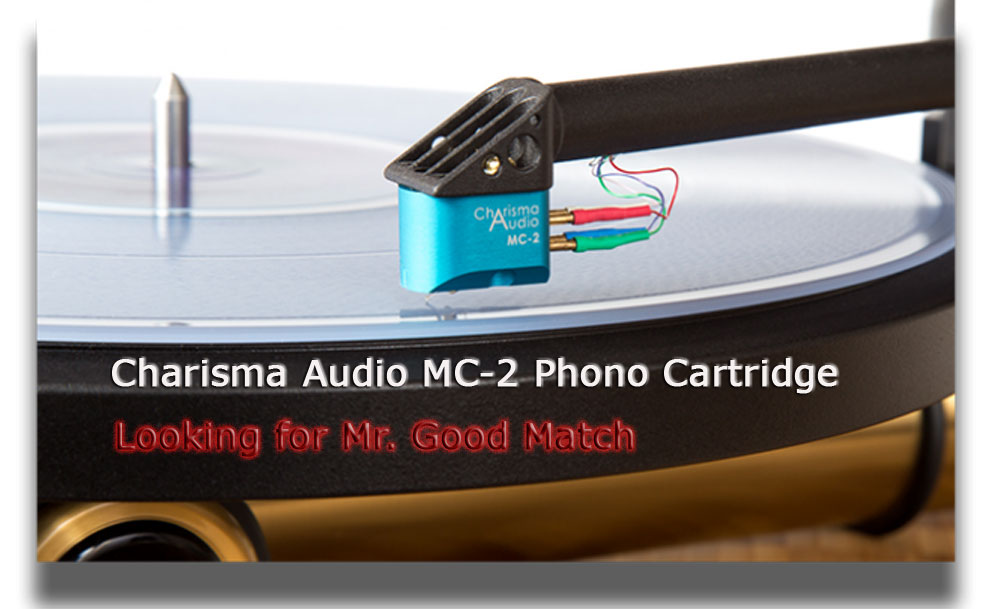
 I’ll admit that I have always thought that mating a good tonearm and cartridge was one of the easiest things you could do in setting up a hi-fi system. All you needed was just about any Grado cartridge and a well-made tonearm. And analog aficionados know that there is no more easy-to-insert-into-an-analog-rig tonearm than the Rega RB300 and all of its incarnations. I myself own a George Warren turntable that came equipped with an arm called the Moth2, which is basically a modified RB300. This is such a reliable and great sounding arm that any thoughts of upgrading my analog set-up usually focused on upgrading my trés cheap Denon DL-110 moving coil cartridge. That brings me to the 2015 AXPONA show in Chicago.
I’ll admit that I have always thought that mating a good tonearm and cartridge was one of the easiest things you could do in setting up a hi-fi system. All you needed was just about any Grado cartridge and a well-made tonearm. And analog aficionados know that there is no more easy-to-insert-into-an-analog-rig tonearm than the Rega RB300 and all of its incarnations. I myself own a George Warren turntable that came equipped with an arm called the Moth2, which is basically a modified RB300. This is such a reliable and great sounding arm that any thoughts of upgrading my analog set-up usually focused on upgrading my trés cheap Denon DL-110 moving coil cartridge. That brings me to the 2015 AXPONA show in Chicago.
I was just about to leave AXPONA on the final day when I stopped by the table of a company called Charisma Audio. Charisma Audio is an Ontario, Canada based distributor of fine high-end audio components. I was drawn to their table by their lovely phono cartridges: the MC-1 ($1,095), MC-2 ($1,495) and Reference One ($1,975). I handed the young lady sitting at their table my business card and expressed my interest in reviewing one of their cartridges. A few weeks later I was emailed by a gentleman named Bernard Li, the owner of Charisma Audio. I sent him a formal request to review one of the Charisma Audio cartridges and included a list of the equipment that was currently in my reference system. Based on my request he said he would send me his MC-2 cartridge for review. I couldn’t have been more excited.
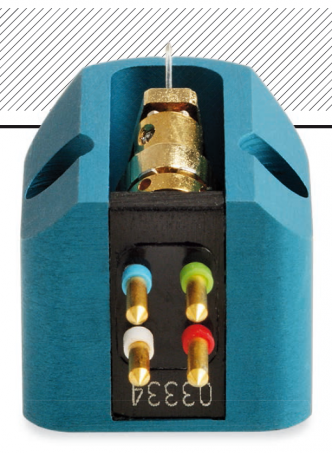
After perusing the Charisma Audio website, I learned that these cartridges are actually designed by Li, who has the cartridges built to his specifications. The Charisma MC-1 and MC-2 cartridges are made with a 12g aluminum body that is partially open where the cantilever and suspension system are. Li uses a 0.32 mm diameter sapphire cantilever in order to keep its mass at a minimum. He obviously felt that the generator mechanism and suspension material are also crucial components to cartridge design. The MC-2’s coils are made from pure iron crossed-coil with single crystal high purity copper. It also uses a very fine diamond stylus. They both have around 0.4mV of output (the MC-2 is actually rated at 0.42mV) and their tracking force is 2.0grams.
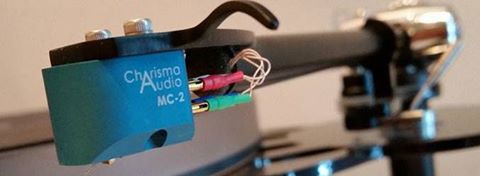
The most distinctive thing about the Charisma cartridges’ looks are the colors of the bodies: the MC-1 is a lovely pastel red, the MC-2 is a turquoise blue and the body of the Reference One is a gorgeous looking Amboyna Burl wooden body. You simply will not find a more impressive family of sub-$2K cartridges. Li, a former contributor to Audiotechnique magazine, is an analog enthusiast, so when it came time for him to design these cartridges, he was determined that they would not only look good but would be well built, meet his own high standards for sonic performance, and still being very affordable. Well, the quality of build and affordability were easy enough for me to see.
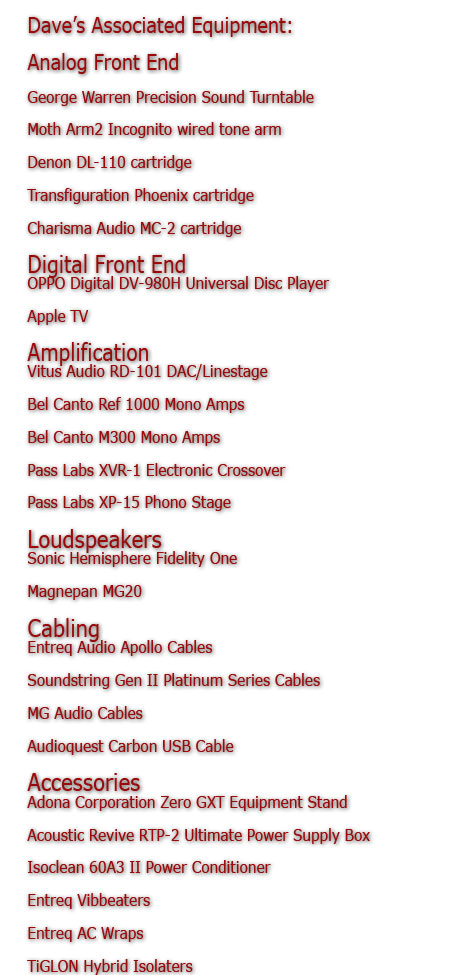
But now it’s time to get into most important part, the MC-2’s sonic performance.
System and Setup
It just so happened that the MC-2 arrive at around the same time as some other analog products arrived for review. I recently reviewed the Abis SA-1.2 tonearm which has since replaced the Moth2 on my George Warren turntable. I also reviewed the Pyon Sound MC Master step-up transformer and TiGLON MGL 10P tonearm cable. This analog rig sits atop the seriously rigid Adona Corporation Zero GXT equipment stand and feeds its signal into the Pass Labs XP-15 phonostage. My linestage is the Vitus Audio RD-101 and my amplification is the Bel Canto M300 and REF1000M mono amps. My loudspeakers are the venerable Magnepan MG20s. The components are connected with Soundstring Gen II Platinum cables and the speakers are connected with the awesome MG Audio Planus III and Planus IV AG speaker cables. Other cartridges used were the Denon DL-110 and Transfiguration Phoenix.
I did a lot of listening to the MC-2 in both the Moth2 and the Abis SA-1.2 arms. My initial impression was that the cartridge worked fine in both arms as both arms are notable for their tracking and stability. But the Abis eventually won out because of the way that it seemed to take the MC-2 deeper into my recordings and draw out more music and a greater sense of the soundstage. So now that I had put the MC-2 in the best possible position to succeed, it was time to get down to business.
Stylus In Groove, Please
After spending a few weeks listening to every almost every piece of vinyl that I owned, I was ready to get into some serious listening sessions. The first album that I really got into was a HQ-180 gm pressing of Miles Davis’ Kind of Blue [Columbia]. Of course the first track I listened to was “So What,” but “so what” was hardly the immediate response I had to what I was hearing. The MC-2 is a wonderful groove tracker. So much so that it retrieved intricate details from this recording that reminded me of why I love vinyl in a way that I could never get to with CD. The warmth and life that the MC-2 renders with makes you think of the best of classic old tube amps such as the CJ MV50, except in this case you don’t sacrifice any bass detail or depth. There is wonderful image specificity of the instruments on this recording, particularly on another classic track, “All Blues.” I love the way Bill Evans tickles the ivories on this song.
T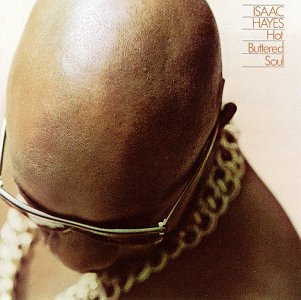 he next recording was the Gain 2 Ultra Analog 180g LP version of Isaac Hayes’ classic, Hot Buttered Soul [MFSL 273]. This legendary R&B album features the late, great Hayes’ funk-tastic, “Hyperbolicsyllabicsesquedalymistic.” This is classic 70’s funk, baby. Nobody did funk and soul back in the day like Isaac Hayes, and this track, with its driving bass line, is as good as it gets. Every single bit of Hayes’ distinctive baritone gets rendered splendidly by the MC-2 in a way that seems to place him in your listening room. Also on this album is the haunting cover of Dionne Warwick’s classic, “Walk On By.” The spellbinding guitar chord and Hayes’ sexually smoky voice are imaged so well and are so well defined that it creates a shockingly lifelike performance. The result is a maximizing of a high-quality recording. And isn’t that why we pay more money for enhanced reissues of our favorite recordings. that made me start pulling out other soul classics such as Al Green’s Let’s Stay Together and Marvin Gayes Let’s Get It On.
he next recording was the Gain 2 Ultra Analog 180g LP version of Isaac Hayes’ classic, Hot Buttered Soul [MFSL 273]. This legendary R&B album features the late, great Hayes’ funk-tastic, “Hyperbolicsyllabicsesquedalymistic.” This is classic 70’s funk, baby. Nobody did funk and soul back in the day like Isaac Hayes, and this track, with its driving bass line, is as good as it gets. Every single bit of Hayes’ distinctive baritone gets rendered splendidly by the MC-2 in a way that seems to place him in your listening room. Also on this album is the haunting cover of Dionne Warwick’s classic, “Walk On By.” The spellbinding guitar chord and Hayes’ sexually smoky voice are imaged so well and are so well defined that it creates a shockingly lifelike performance. The result is a maximizing of a high-quality recording. And isn’t that why we pay more money for enhanced reissues of our favorite recordings. that made me start pulling out other soul classics such as Al Green’s Let’s Stay Together and Marvin Gayes Let’s Get It On.
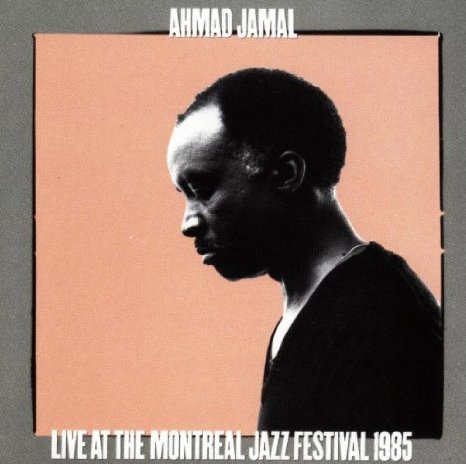 Moving on to some live music, the MC-2 really shined when it was put to the test on the great Ahmad Jamal’s “Yellow Fellow”, from Live at the Montreal Jazz Festival [Atlantic]. This track is great fun to listen to from the start as a French-speaking woman’s voice introduces Jamal with startling clarity. I get a kick out of watching my friends look around to see where that voice is coming from whenever I want to show off my system’s prowess. Those of you who are familiar with Jamal know that he wastes little time getting into and keeping a brisk pace in his performances. The MC-2 doesn’t miss a bit of it. Its ability to maintain groove stability allows for immense amounts of detail to come through vividly, especially on the bottom end where James McCormack’s bass sounds more like a natural instrument than it does a recorded instrument.
Moving on to some live music, the MC-2 really shined when it was put to the test on the great Ahmad Jamal’s “Yellow Fellow”, from Live at the Montreal Jazz Festival [Atlantic]. This track is great fun to listen to from the start as a French-speaking woman’s voice introduces Jamal with startling clarity. I get a kick out of watching my friends look around to see where that voice is coming from whenever I want to show off my system’s prowess. Those of you who are familiar with Jamal know that he wastes little time getting into and keeping a brisk pace in his performances. The MC-2 doesn’t miss a bit of it. Its ability to maintain groove stability allows for immense amounts of detail to come through vividly, especially on the bottom end where James McCormack’s bass sounds more like a natural instrument than it does a recorded instrument.
Against my better judgment, I did a brief comparison of the MC-2 to my brother’s far more expensive Transfiguration Phoenix. But much to my surprise the MC-2 was at least the equal of the Phoenix in some regards and better in a couple of the more important ones: musical details within the soundstage (i.e. natural decay on struck cymbals) and bass extension. I did a lot of comparing while listening to Pink Floyd’s The Wall [Columbia], particularly “Comfortably Numb” and “The Thin Ice.” The Phoenix was slightly better in terms of overall soundstage scale and depth, but when I say “slightly” I mean slightly. You’d have to be listening to an immense recording like The Wall to notice. In fairness to my brother’s cartridge, it does have some miles on it and has probably seen its best days. But still, the performance of the MC-2 on its own merit should make it a “must hear” for anyone looking to spend more than a couple grand on a cartridge.
Conclusion
After spending the last few months with the Charisma Audio MC-2 phono cartridge and Abis SA-1.2 tonearm in my analog setup, I have to admit to being more than a little spoiled. They’ve shown me just how much of an impact a well partnered and setup arm/cartridge combo can have on a system. I’ve never enjoyed vinyl more. But unfortunately, my accountant (and pseudo-wife) will only allow me to add one of these pieces to my system. You’ll have to check back in the near future to see which one I kept. With any luck, I’ll have them both.


dave thomas
Specifications:
Charisma Audio MC-2
Cartridge Weight: 12 g
Cantilever: sapphire
Stylus: super fine line contact nude diamond
Vertical Tracking Angle: 20 degrees
Coil: pure iron crossed-coil with single crystal high purity copper
Output Voltage: 0.42 mV at 3.54 cm/sec.
Internal Impedance: 14 ohms
Frequency Response: 20 – 25,000 Hz ± 1 dB
Channel Balance: better than 0.5 dB
Channel Separation: better than 30 dB
Dynamic Compliance: 10 um/mN
Recommended Loading: 100 – 1,000 ohms
Recommended Tracking Force: 2.0 g ± 0.1 g
Tracking Ability at 315 Hz / 2 g: 80 uM
Recommended Tonearm Mass: medium
Break-in Period: 50 hours
Price: $1,495.00
Charisma Audio
Suite 86, Unit A14
4261, Highway 7
Markham, Ontario
Canada L3R 9W6
Telephone: (905) 470-0825
Fax: (905) 470-7966
E-mail: charisma@rogers.com
Website:www.charismaaudio.com
Stereo Times Masthead
Publisher/Founder
Clement Perry
Editor
Dave Thomas
Senior Editors
Frank Alles, Mike Girardi, Russell Lichter, Terry London, Moreno Mitchell, Paul Szabady, Bill Wells, Mike Wright, and Stephen Yan,
Current Contributors
David Abramson, Tim Barrall, Dave Allison, Ron Cook, Lewis Dardick, John Hoffman, Dan Secula, Don Shaulis, Greg Simmons, Eric Teh, Greg Voth, Richard Willie, Ed Van Winkle, and Rob Dockery
Site Management Clement Perry
Ad Designer: Martin Perry





Be the first to comment on: Charisma Audio MC-2 Phono Cartridge